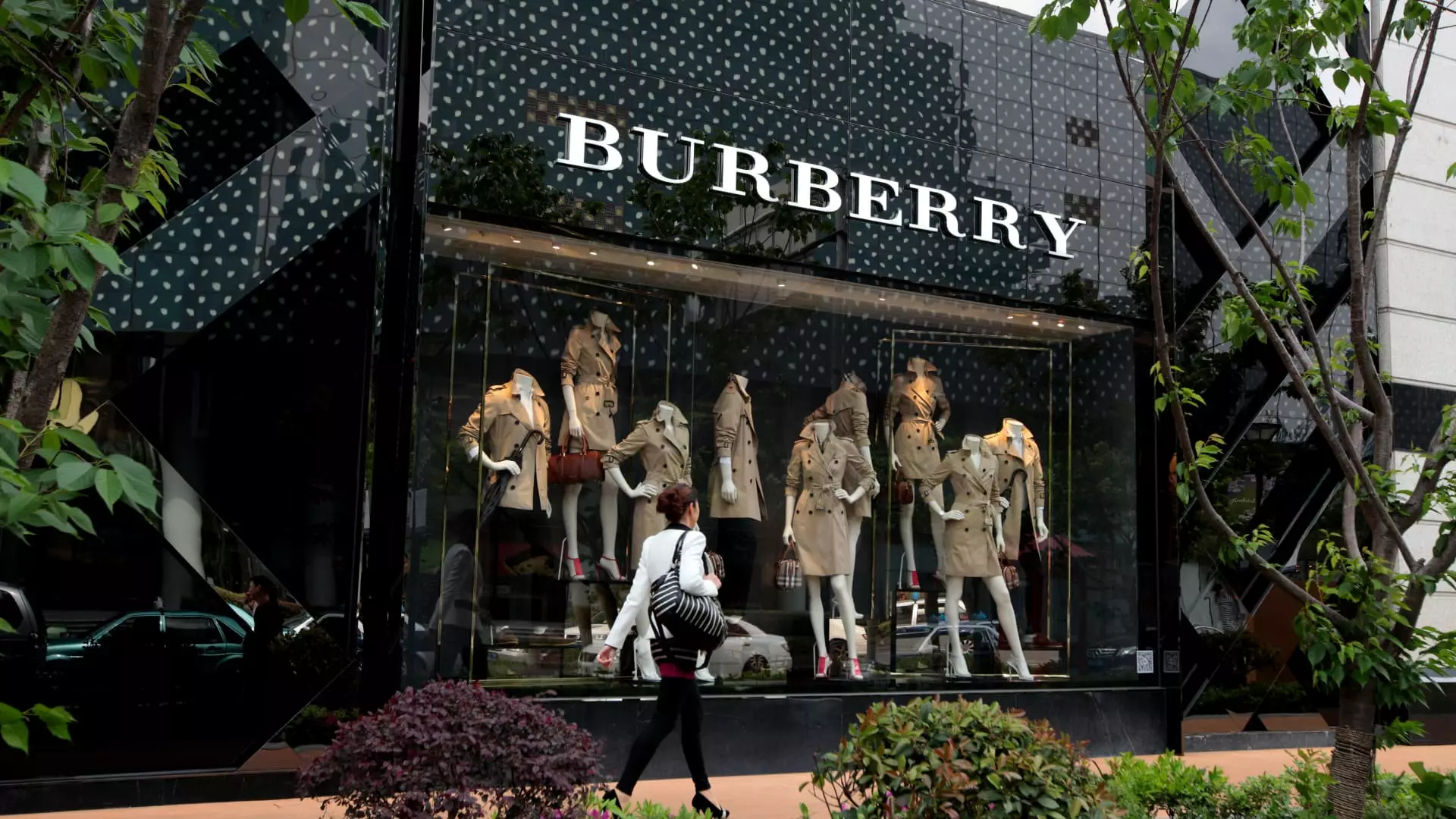Burberry, an iconic British luxury fashion house, has long been synonymous with high-quality outerwear and distinctive design, particularly its famous trench coats and classic check patterns. Yet, in recent years, the brand has faced significant turmoil. A notable decline in its stock price—down nearly 39% year-to-date—highlights a pressing need for transformation within the company. As consumers pursue authenticity and quality in luxury goods, Burberry’s gradual shift towards niche products led to a disconnect from its storied heritage and a compromise on its market positioning.
The appointed new CEO, Joshua Schulman, brings a wealth of experience from his stint at Michael Kors, which sets the stage for a transformative era at Burberry. His appointment as the fourth CEO within a decade alludes to the challenges faced by the brand, indicating a broader issue within its strategic direction. With Schulman’s urgent call to action, Burberry is poised for a renewed focus on its core offerings while reestablishing its connection with dedicated shoppers.
The unveiling of the “Burberry Forward” strategic plan signifies a critical pivot for the luxury brand. Schulman’s approach is defined by a desire to reconnect the company with its original purpose, positioning itself as a champion of its historical strengths. The emphasis on staple products—such as the iconic coats and scarves—represents an intentional effort to recapture the brand’s identity and appeal to both new and loyal customers.
Investors reacted enthusiastically to this announcement, with shares soaring over 22% in response to the plans. Analysts are viewing this moment as potentially significant for Burberry, suggesting it could ultimately herald a turning point in the brand’s endeavors to reclaim market share in the competitive luxury sector. The objective is clear: to stabilize operations, heighten brand appeal, and usher in a period of sustained, profitable growth.
The luxury fashion landscape is evolving, marked by a shift towards authenticity and quality over sheer extravagance. Consumers are increasingly discerning, gravitating towards brands that embody a sense of heritage and craftsmanship. As echoed by analysts, the renewed focus on Burberry’s heritage is a strategic move to meet these changing preferences, while also carving out a competitive niche in the outerwear category, which has been seen as less saturated and demanding than some other segments.
Burberry’s strategic realignment can also be seen as a response to the broader luxury market challenges, which are predicted to contract by 2% this year. In this context, and amidst tumultuous trading conditions, the pressure is on Schulman and his team to cultivate both brand desirability and market sizing. Many luxury brands are taking cues from leading names—such as Louis Vuitton—balancing high-end, limited collections with accessible, essential merchandise. As Burberry leans into this strategy, the effectiveness will depend on Schulman’s ability to unite business strategies with innovative design, a necessity highlighted by analysts including Yanmei Tang from Third Bridge.
As Burberry embarks on this new chapter, the implications for design, pricing architecture, and overall communication strategies remain critical. The re-evaluation of product assortment to prioritize heritage items signals a shift away from experimental, niche-focused offerings that may have alienated traditional customers. This recalibration is vital for reinforcing Burberry’s global luxury brand positioning while simultaneously appealing to aspirational consumers.
The success of this ambitious strategy in enhancing Burberry’s stature in the luxury market relies heavily on Schulman’s alignment with the creative vision of the brand’s design team. Any discord in this dynamic could jeopardize the coherent execution of “Burberry Forward.” The historical charm of Burberry, paired with contemporary aspirations, will define its capacity to navigate the complexities of modern luxury.
Burberry’s new vision ushers in renewed hopes for a brighter future, emphasizing the importance of resilience, adaptability, and identity in a rapidly shifting marketplace. As the brand forges ahead, the world of luxury fashion watches with keen interest, eager to see if this cherished institution can indeed reclaim its rightful place at the pinnacle of British craftsmanship and design.

